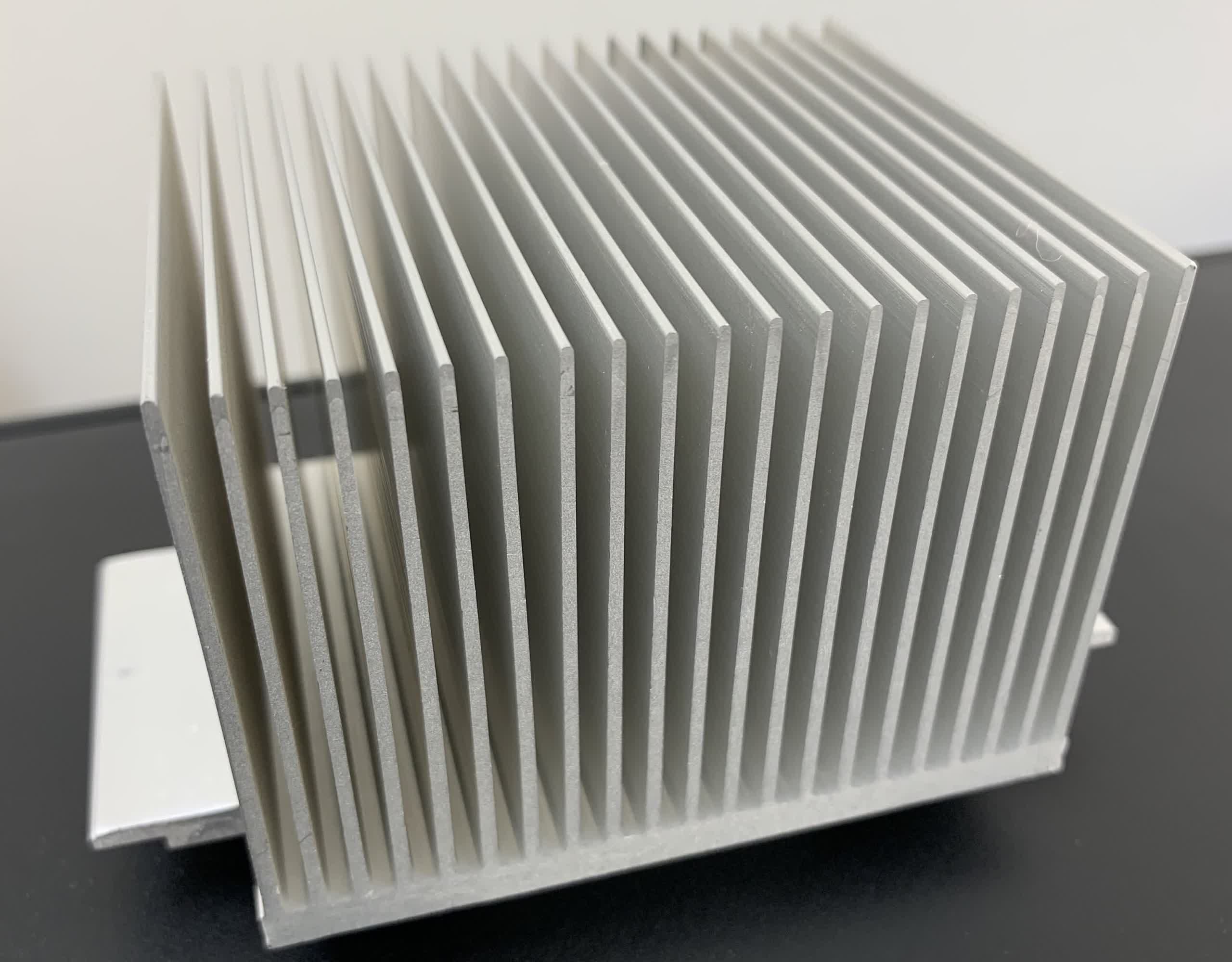In context: Heatsinks are essential in any computer and many electronic devices. As CPUs and GPUs have gotten faster and hotter over the years, heatsinks have evolved and come in many shapes and sizes. Some are huge, like the one in the PlayStation 5 (some are even bigger). Others are small, like the ones used on an M.2 SSD.

Regardless of size or shape, the way they are manufactured is pretty cool (no pun intended). There are generally five different processes to make most of the standard heatsinks we use today — casting, milling, extrusion (pushing hot metal through a die), 3D printing, and skiving (cutting the metal into slices, also called scarfing).
While the video is not new, thermal solution manufacturer Zaward has a good example of the skiving process on its YouTube channel (below). Here it is carving large heatsinks from a single block of aluminum, but the process works the same for copper.
First, engineers lubricate a large metal block and place it in a skiving machine. A control panel tunes the blade for desired fin thickness and other specifications. Once the machine starts processing, the skiver shaves the metal downward at an angle.
Also read: The Science of Keeping It Cool
On Zaward's machine, the top part of the blade pushes the fin into a vertical position as the bottom part cuts the next slice simultaneously. As you can see in the second video from Reddit (below), some skiver blades cut and then lift to bend the fin.
Regardless of the type of machine, the third step is dissecting. A different blade cuts the long block of raw heatsinks into the desired lengths. As you can imagine, all this metal cutting leaves burrs and sharp edges. So the raw heatsink blocks are sent through a grinder to remove these imperfections. The grinding process also shaves down the excess metal from the bottom of the heatsink to make it the desired height.
Once it's cleaned up, the product is ready for packaging and is shipped to OEMs that manufacture anything from PCs to satellites. It's a pretty neat process that many never get to see.
Found is a TechSpot feature where we share clever, funny or otherwise interesting stuff from around the web.
https://www.techspot.com/news/94247-not-new-but-cool-how-heatsinks-made.html